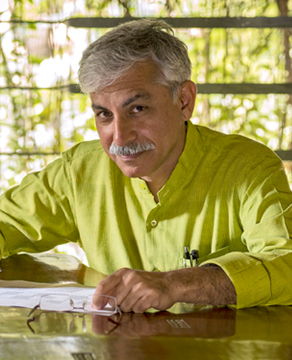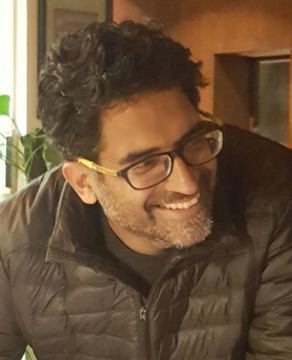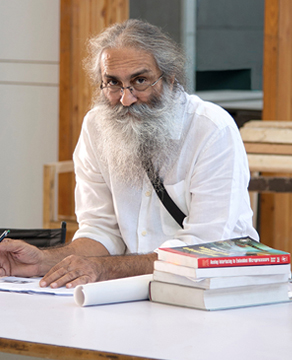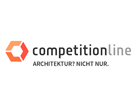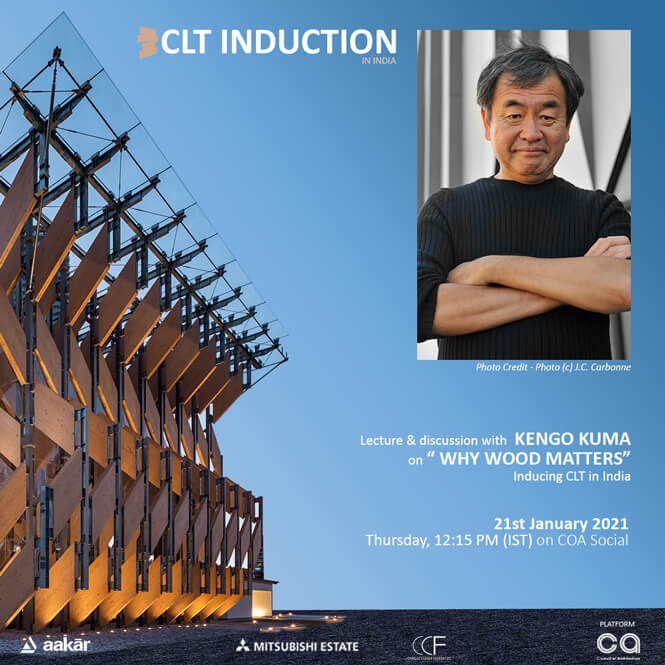
“Why Wood Matters”
COA social reads, Ar. KUMA Kengo in conversation with
Kengo Kuma & Associates has designed architectural works in over twenty countries and received prestigious awards, including the Architectural Institute of Japan Award, the Spirit of Nature Wood Architecture Award (Finland), and the International Stone Architecture Award (Italy), among others. Kengo Kuma & Associates aims to design architecture which naturally merges with its cultural and environmental surroundings, proposing gentle, human scaled buildings. The office is constantly in search of new materials to replace concrete and steel, and seeks a new approach for architecture in a post-industrial society.
Video:- COA Social Reads, Japanese Architect KUMA Kengo in conversation with Ar.Durganand Balsavar
“CLT Workshops”
The workshops will discuss Cross Laminated Timber in detail along with case studies for better understanding of the building material.
CLT Workshop A – Introduction to Cross Laminated Timber.
CLT Workshop B – Innovation with Mass Timber, a house and a tower.
CLT Workshop C – Understanding CLT in the Indian context.
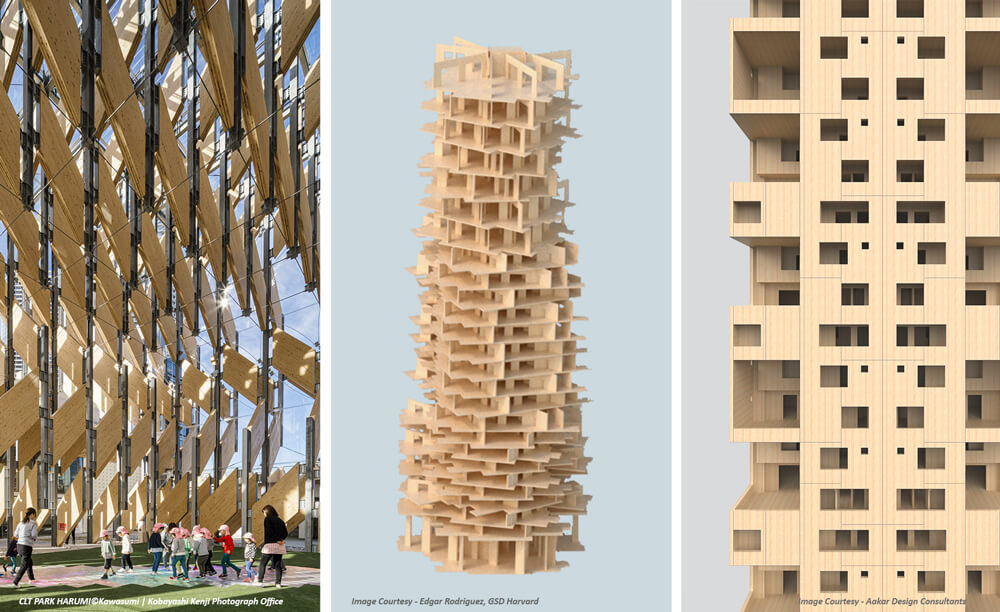
CLT INDUCTION Introducing Cross Laminated Timber in India
Cross Laminated Timber (CLT) is a Mass Timber Construction technique that distinguishes itself from the present-day steel and concrete construction. It is a renewable resource and has a negligible carbon footprint compared to carbon or steel, since carbon is sequestered within the wood it is made from. Cross Laminated Timber consists of lumber that is graded, kiln-dried and trimmed after which it is glued and stacked on one another in layers, such that each layer is placed perpendicular to the other. This perpendicular layering of wood helps the panel achieve structural rigidity in two directions. Since the panels are pre-fabricated, only component assembly is to be done on site, thus reducing the construction time and labour costs which can potentially help in lowering the construction cost. The CLT panels being light weight helps in reduction of the size of the foundations, reducing the carbon footprint, contributed by the use of concrete.
Cross Laminated Timber (CLT) panels can be used for walls, floors and roofs in both load-bearing and non-load-bearing structures. The flexibility of thickness and sizes of CLT Panels, is able to fulfil the requirements of different types of projects. Initially these panels were used for low and mid-rises but in recent years it is also being used in construction of high-rises. It is also considered a good substitute to concrete and steel due to its strength to weight ratio. The prime advantages of these prefabricated panels are speed, efficiency and precision of construction. Participants are expected to propose innovative construction systems that draw on the performance characteristics of Cross Laminated Timber as the main building material.
In Japan, CLT is being promoted as a new material to enhance sustainable forestry development. The sponsors, MEC Industry Co., Ltd. is a company formed by the joint investment of seven companies, including the major Japanese general developer Mitsubishi Estate Co, Ltd., the major general contractor Takenaka Corp., and other companies in various lines of business.
The Competition challenges the participants to design an urban or peri-urban housing scheme with an innovative construction system using CLT in the Indian Context; hence the design proposal should explicitly focus on innovative structural as well as spatial building systems which can explore the use of CLT in the industry. The participants are also allowed to pick up existing housing projects and re-designing the building system using CLT as the primary material.
Program A: Innovative Mid to high-rise Building
Program B: Innovative Low-rise detached Housing/Villas
MEC Industry aims to identify an ecosystem of players (in particular architects and structural engineers) stimulate and steward the timber construction movement in India and especially encourage professionals and young practitioners with current projects to join the sustainable construction movement.
The CLT design competition and workshops are open for students, young professional and companies coming from diverse backgrounds. Although it is recommended to have at least one architect in the team. Architects and structural engineers teams are especially encouraged to bring out the potential of the material through combined teams. There is no registration fee for the competition as well as the workshops.
Awards
1st Prize
Trip to Japan, including a visit to the Tokyo Olympics Stadium and a meeting with Kengo Kuma and Associates. (2 Business Class Packages) or a Cash award of INR 6,00,000.*
2nd Prize
Trip to Japan, including a visit to the Tokyo Olympics Stadium and a meeting with Kengo Kuma and Associates. (2 Economy Class Packages) or a Cash award of INR 3,00,000.*
3rd Prize
Trip to Japan, including a visit to the Tokyo Olympics Stadium and a meeting with Kengo Kuma and Associates.(1 Economy Class Packages) or a Cash award of INR 2,00,000.*
Student Prize
INR 1,00,000
06 Honourable Mentions
20 Finalists
Publications + Certificate of achievement and a book signed by Architect KUMA Kengo.
Special Sponsor Award
Additionally, the sponsors would consider practising professionals with keen interest in the material to visit their plant and opportunities to visit other buildings using CLT in Japan and become a part of the Indian ecosystem to design with CLT in India.
*Given the special circumstances due to Covid 19, the sponsors may at their discretion present cash awards to the winners in lieu of the trip.
All winners and finalists will be awarded a certificate of achievement and a book signed by Architect KUMA Kengo.


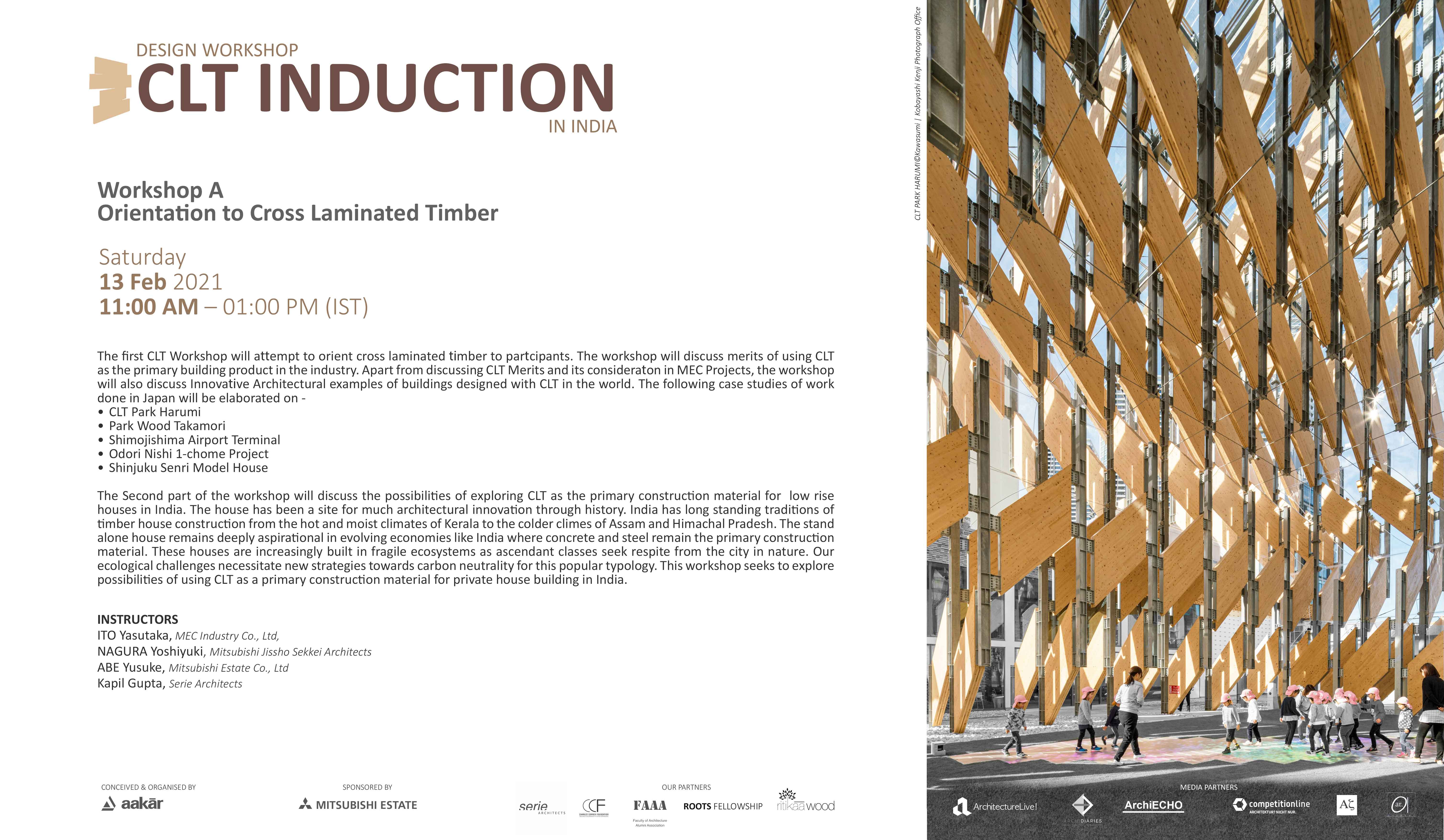

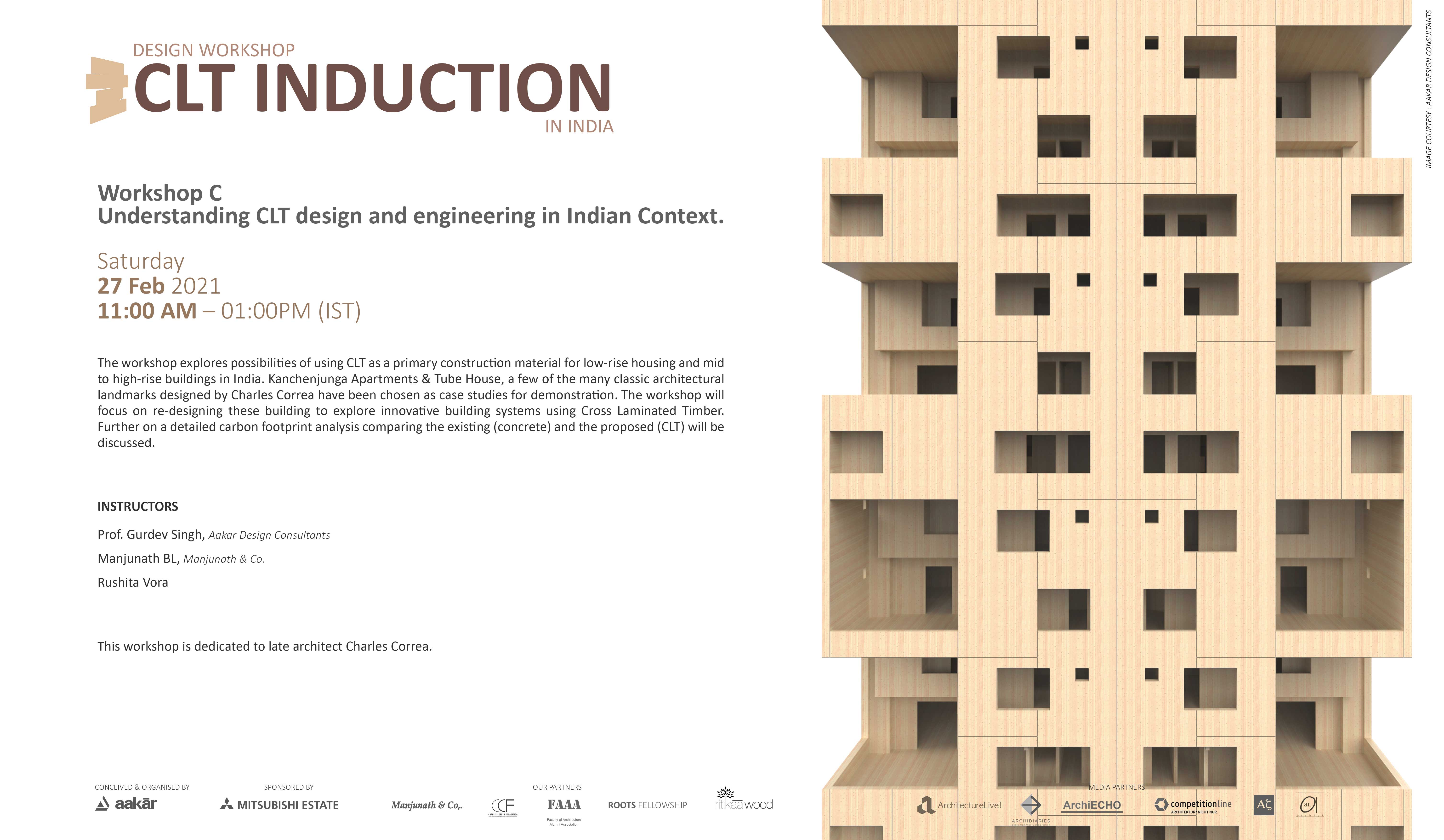
 21st January 2021, Thursday, 12:15 PM (IST)
21st January 2021, Thursday, 12:15 PM (IST)  31st March 2021, Wednesday, 11:59 PM (IST)
31st March 2021, Wednesday, 11:59 PM (IST) 

